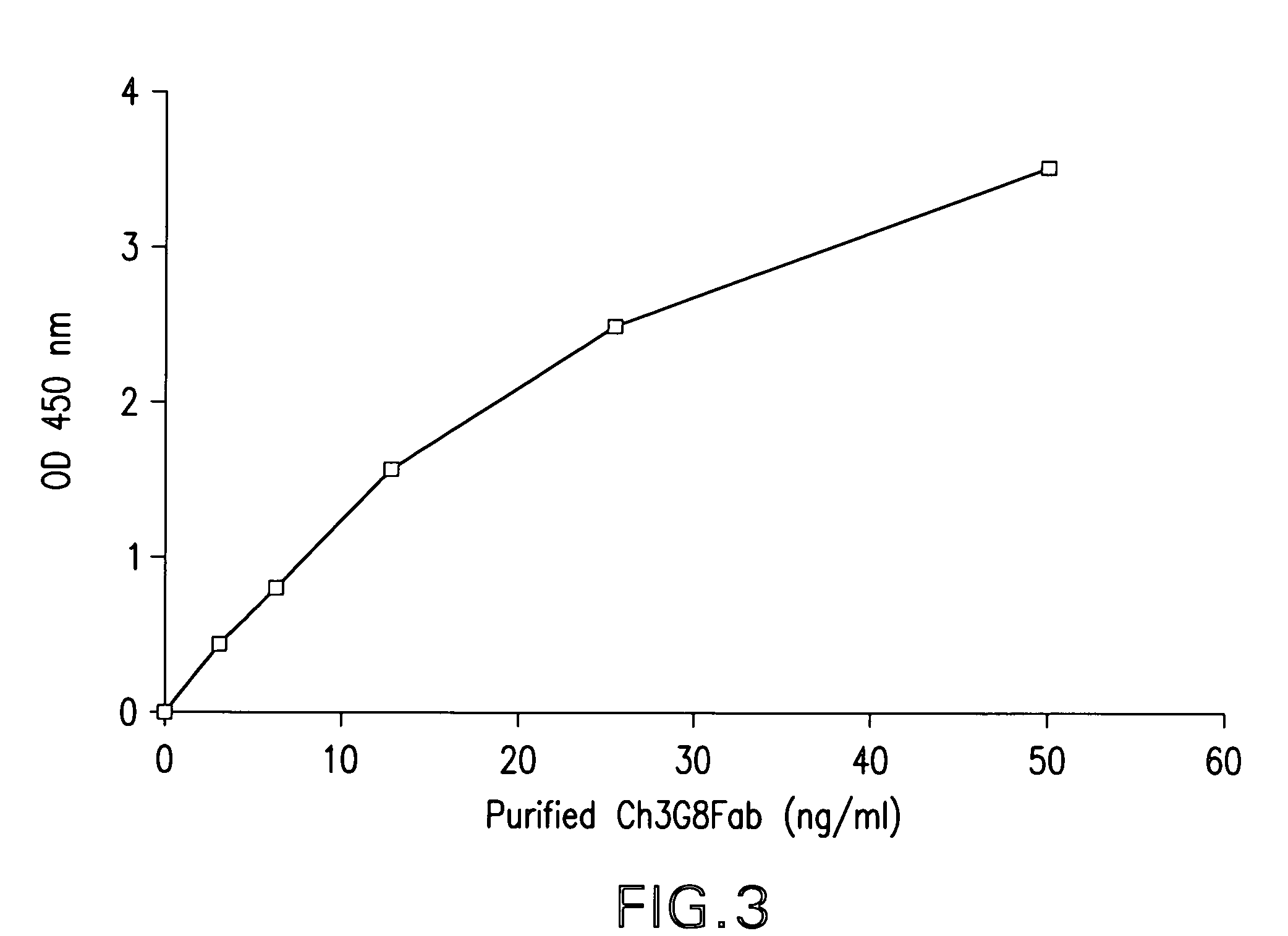Dual expression vector system for antibody expression in bacterial and mammalian cells
a technology of antibody expression and expression vector, applied in the field of dual expression vector, can solve the problems of inability to accurately replicate, severely limit the number of mabs, and no effective system for selecting and improving full-length mab molecules useful for human therapeutics
- Summary
- Abstract
- Description
- Claims
- Application Information
AI Technical Summary
Benefits of technology
Problems solved by technology
Method used
Image
Examples
Embodiment Construction
[0039]The present invention is directed to a novel dual expression vector system for expression and secretion of Fab fragments in bacterial cells, e.g., E. coli cells, and for expression of IgG heavy and light chain polypeptides in eukaryotic cells, preferably mammalian cells, but also, e.g., insect cells or avian cells, and to methods for its use in screening and optimization of monoclonal antibodies with particular binding characteristics. As discussed above, the invention is based, in part, on the Applicants' development of a dual expression vector system capable of expressing and secreting into the periplasmic space antibody fragments in bacteria and expressing and secreting full-length antibodies in mammalian cells. In this novel vector a bacterial promoter and signal sequence are included in an intron located within the signal sequence of a mammalian IgG heavy or light chain gene, and a bacterial stop codon is included in another intron between the CH1 and the hinge region of ...
PUM
| Property | Measurement | Unit |
|---|---|---|
| pH | aaaaa | aaaaa |
| pH | aaaaa | aaaaa |
| time interval | aaaaa | aaaaa |
Abstract
Description
Claims
Application Information
 Login to View More
Login to View More - R&D
- Intellectual Property
- Life Sciences
- Materials
- Tech Scout
- Unparalleled Data Quality
- Higher Quality Content
- 60% Fewer Hallucinations
Browse by: Latest US Patents, China's latest patents, Technical Efficacy Thesaurus, Application Domain, Technology Topic, Popular Technical Reports.
© 2025 PatSnap. All rights reserved.Legal|Privacy policy|Modern Slavery Act Transparency Statement|Sitemap|About US| Contact US: help@patsnap.com



